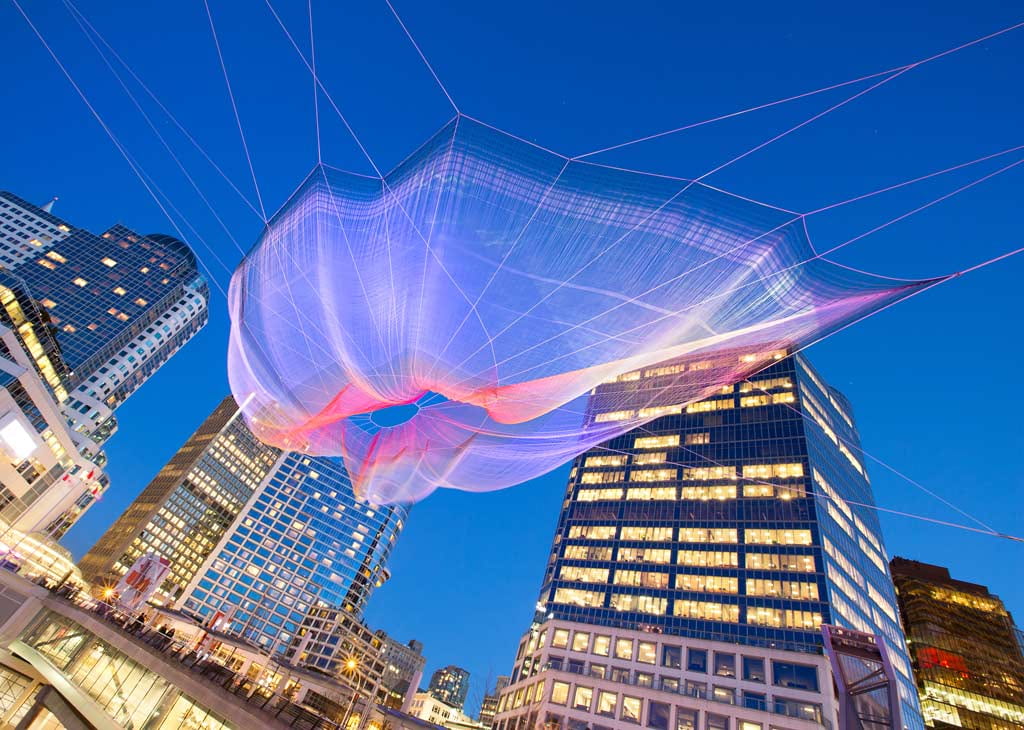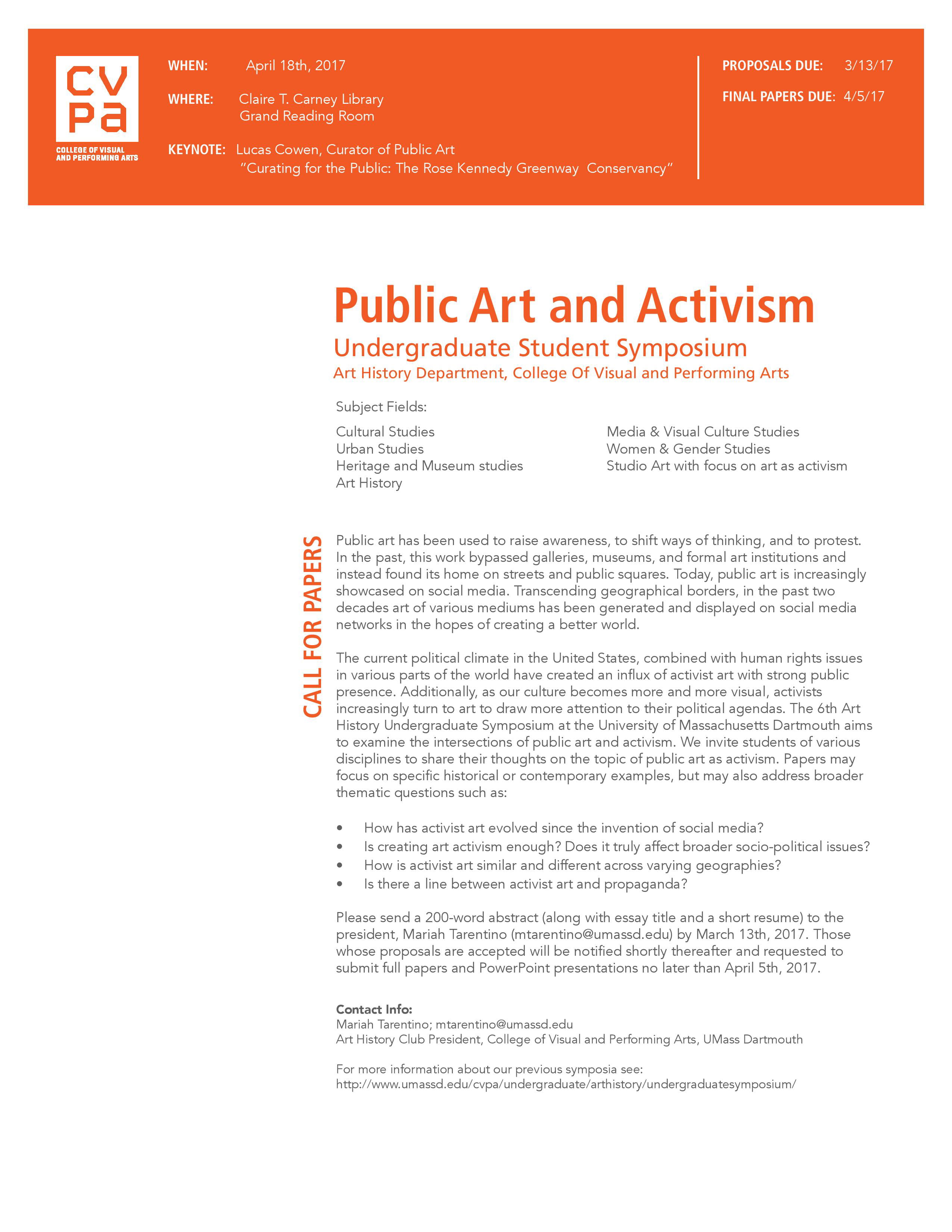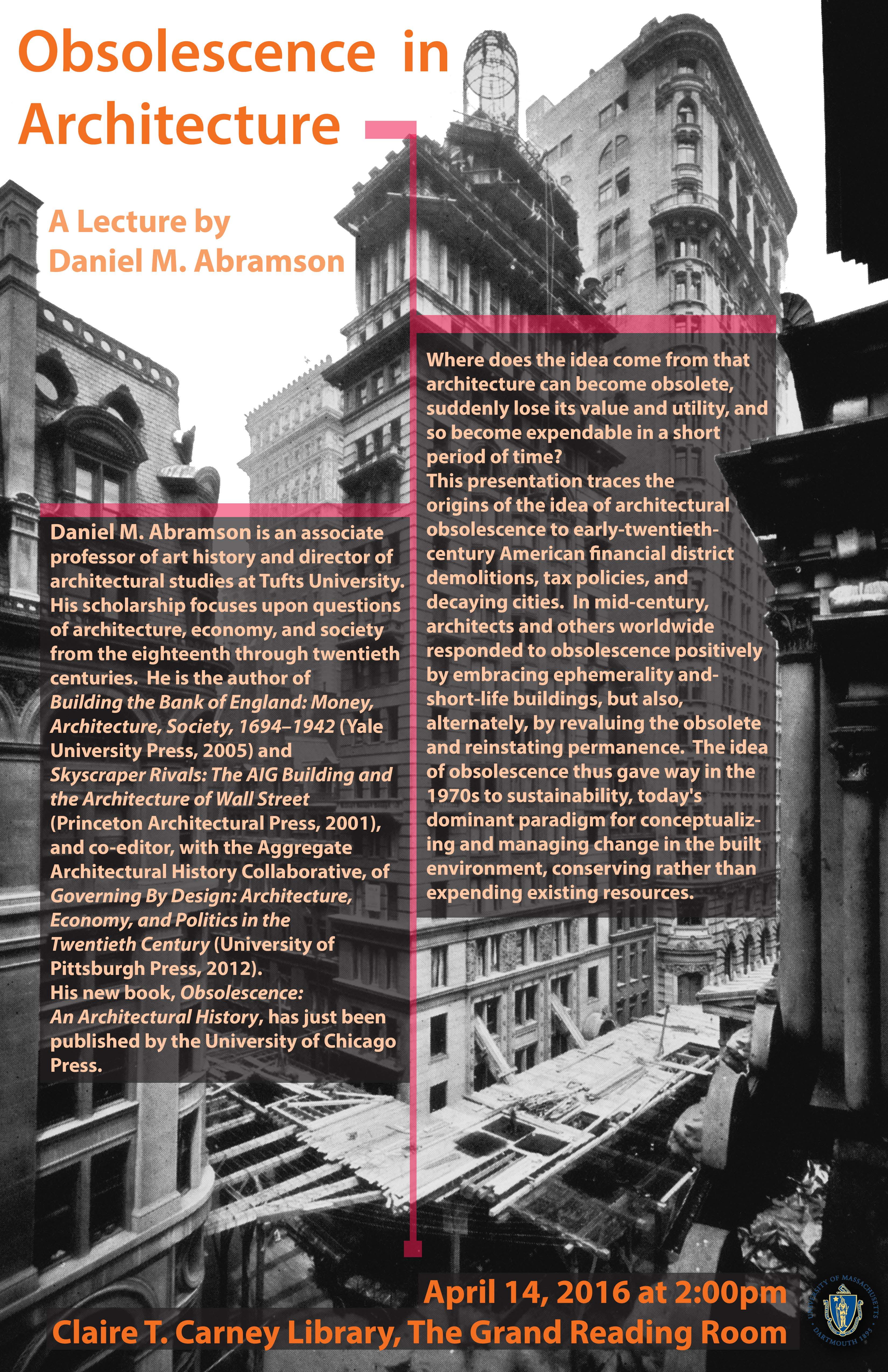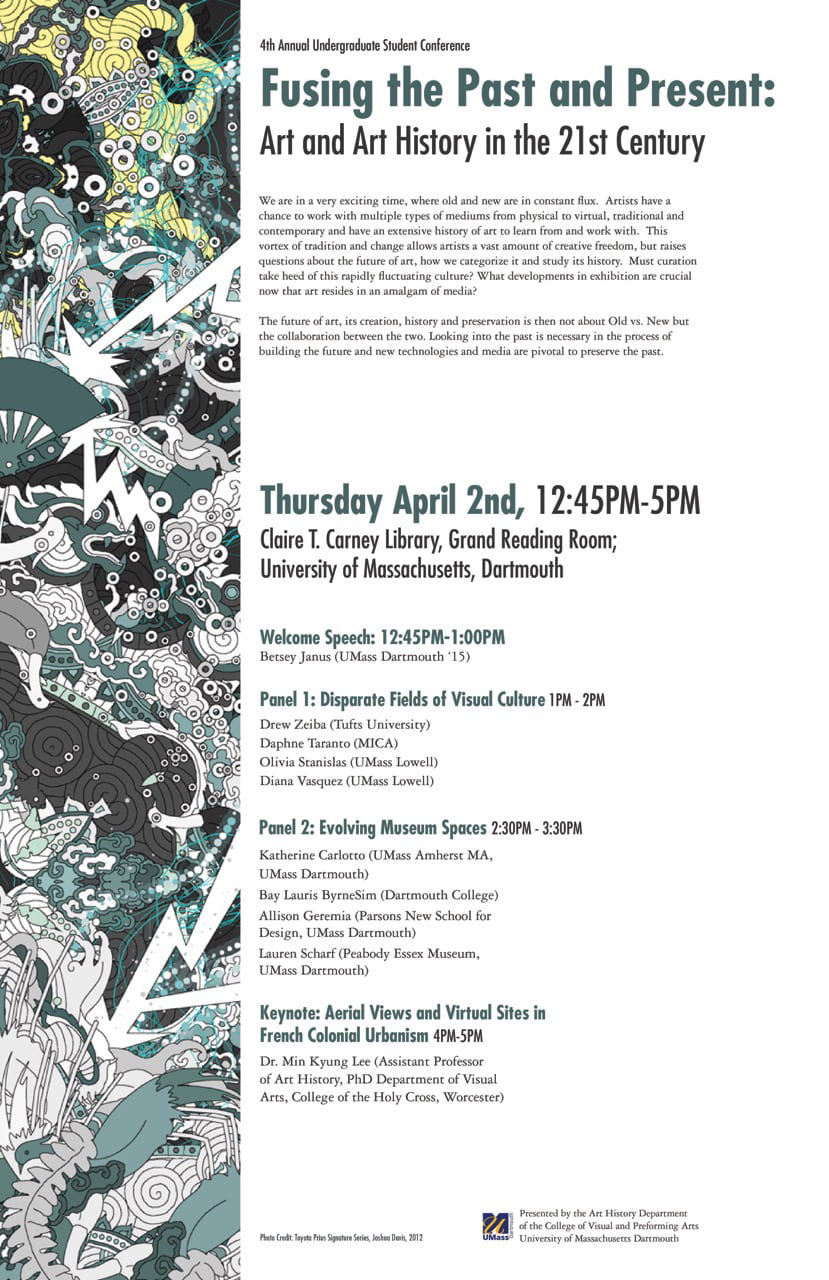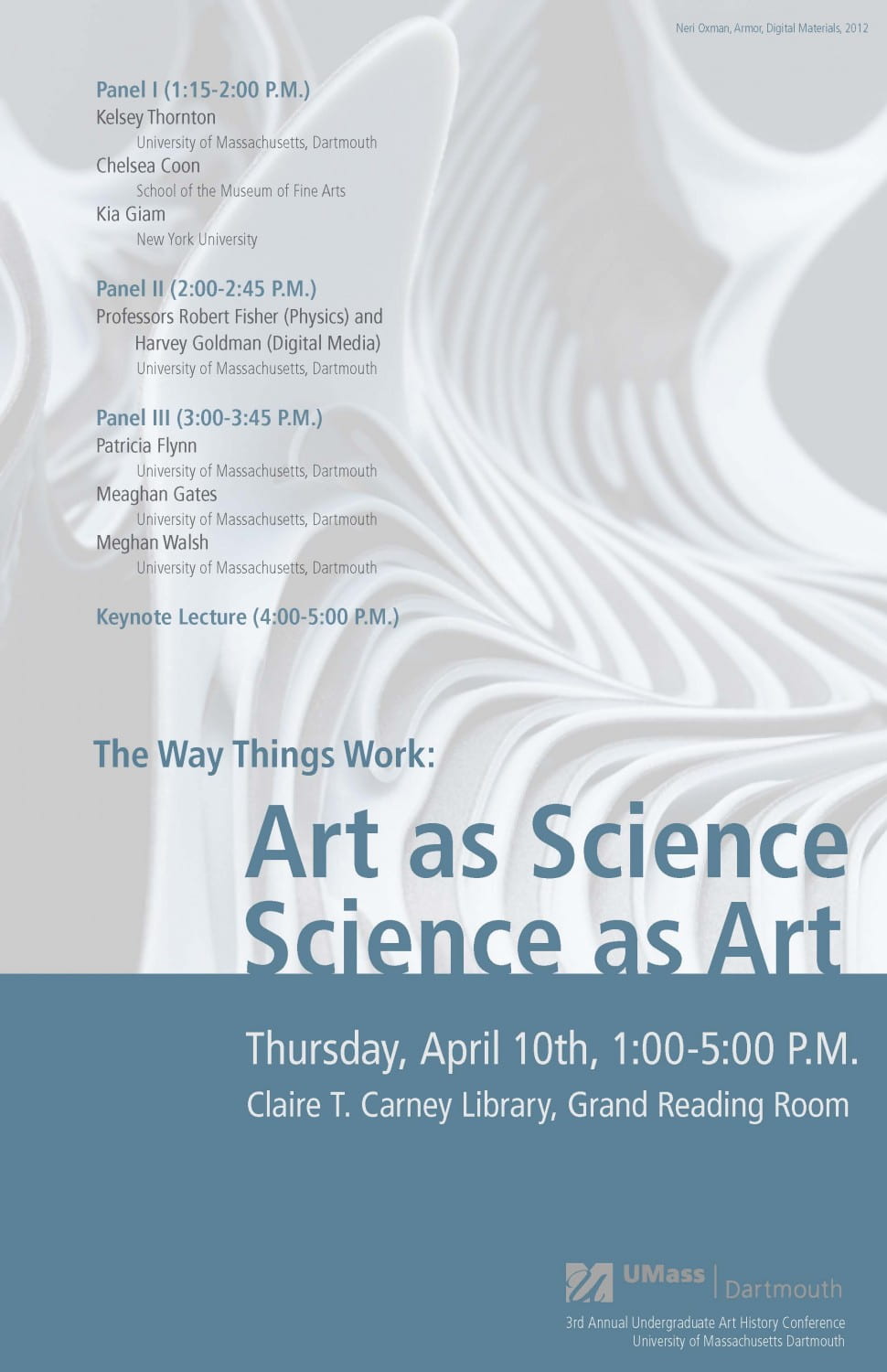 Call for Papers! – Deadline Monday, February 24th, 2015
Call for Papers! – Deadline Monday, February 24th, 2015
Fourth Annual Art History Undergraduate Student Conference
Art History Department, College of Visual and Performing Arts
University of Massachusetts, Dartmouth
Overview:
Progress seems to be strictly linear; advancement builds upon the graves of obsolete ideas and technology. Though there has been and will continue to be tension between progress and tradition, this friction is important to innovation, and this is exceptionally true in the world of art creation, and exhibition. Progress is a cyclical process of relationships, and nowhere is this more prevalent than in the History of Art. For example, the resurgence of taste in the Renaissance during Neoclassical period is interesting in its continuation of past ideals. In direct contrast, Impressionists, tired of the focus on the organization of space and canon figures, aimed to capture light in its transient state, and were deemed heretical for going against tradition. Where the former built off the past, the latter pushed onward, but neither would have had the drastic impact on history without the context of the relationship between them.
We are in a very exciting time, where old and new are in constant flux. Artists have a chance to work with multiple types of mediums from physical to virtual, traditional and contemporary and have an extensive history of art to learn from and work with. This vortex of tradition and change allows artists a vast amount of creative freedom, but raises questions about the future of art, how we categorize it and study its history. Must curation take heed of this rapidly fluctuating culture? What developments in exhibition are crucial now that art resides in an amalgam of media?
The future of art, its creation, history and preservation is then not about Old vs. New but the collaboration between the two. Looking into the past is necessary in the process of building the future and new technologies and media are pivotal to preserve the past. The Art History Department of the College of Visual and Performing Arts at the University of Massachusetts, Dartmouth seeks proposals for a student symposium on the topic of this collaborative process; where art and its history are going; the benefits as well as the disadvantages of New Media technology and its impact on tradition, art making, and history. Papers on the exploration of the museum and gallery space, curation, and exhibition with contemporary difficulties are also welcome.
Call for Papers:
We invite papers from undergraduates as well as graduate students in all areas of the arts, sciences, business and related fields such as, art history and visual culture, history of science, BFA and MFA programs which comprise a broad range of methodologies and media. In addition, we welcome proposals on the presentation of creative artwork and design.
Possible topics include but are not limited to the following:
- Curation
- Exhibition
- Augmented Reality and the Museum
- New Technologies Impact on the Arts
- Changes to the Business Climate for the Arts and Art History
- Vision of the Short-Term Future of Art and Art History
- Obsolete Careers and New Directions
- Innovations in Art Forensics
Please submit a 200-300-word abstract, five keywords and a brief CV to bjanus@umassd.edu by Monday, February 24th, 2015. Decisions will be made by March 3rd, 2015. Selected participants must submit their finalized conference papers by no later than Tuesday, March 17th, 2015. This is necessary to schedule the presentations. In addition, all papers will be considered for publication in the CVPA Art History Journal.
Please note: Due to budgetary restrictions, student participants traveling from a distance are expected to seek reimbursement for lodging and transportation expenses from their home institutions.
Questions? E-mail Betsey Janus at bjanus@umassd.edu\
Conference Time and Place:
Claire T. Carney Library, Grand Reading Room; University of Massachusetts, Dartmouth
Thursday, April 2nd from 1:00 PM to 6:00 PM
Light Refreshments will be provided.
Organizers: Adrien Mercier and Betsey Janus
Contact Email: bjanus@umassd.edu
Department of Art History Faculty Sponsors: Dr. Pamela Karimi, Dr. Thomas Stubblefield, and Dr. Hallie Meredith
